General comments
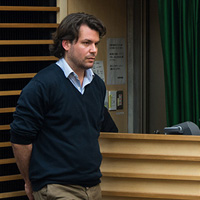
Lab. of Architectural Algorithms & Applications,
School of Architecture, Southeast University, Nanjing, China
(Jury stage : Postgraduate Studies Program, Chair, Computer Aided Architectural Design (CAAD), Swiss Federal Institute of Technology (ETH), Zurich, Switzerland)
The first ALGODeQ competition demonstrates that the field of algorithmic design is wide open! The presented projects differ as much in their contexts as in their methodologies and design goals. What they share is a vision of how computation can contribute to a new, possibly better architecture.
The ALGODeQ competition proves that architects and designers are no longer limited to existing software packages - they are instead designing their own. This frees the architects of the confines and restrictions of these packages, yet perhaps more importantly it demands of them a fundamental rethink of how a design comes into place. Which goals and intentions are set out, how is a context defined, which parameters are relevant, how are conflicting ambitions resolved, how can proposals be evaluated? Each algorithmic approach necessitates an explicit definition of these questions.
The projects in the ALGODeQ competition show that the computer ‘s role has evolved from being primarily an efficiency-enhancing tool into the role of a true partner in the design process. In many of the projects, the architects harness the computer’s power to increase the scope of design solutions, both in their multiplicity and level of detail. Other projects use computation to evaluate design solutions, and to evolve them in an optimization process. Further projects demonstrate how computation can be used to coordinate interactions between hundreds of individuals to specify a design. Almost all of the ALGODeQ approaches result in designs that would previously have been difficult to calculate, or even to conceive of. And thanks to advances in fabrication technology, these new architectures are increasingly transcending the computer screens and are rendered – physically – into the real world. An exciting time awaits us.
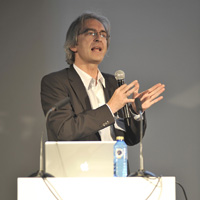
IAM Research & Studio
professor
Vice-Dean Faculty of Architecture, Director, TU Graz Field of Expertise Sustainable Systems, Director Institute of Architecture and Media (IAM), Graz University of Technology, Graz, Austria
About ALGODeQ
Holding a competition about algorithmic design was an idea long overdue. I was happy to support Makoto Sei Watanabe’s initiative, especially because of the way the competition was framed. If algorithms are typically associated with pragmatism and efficiency, the success of the ALGODeQ brief lies in the fact that it called for works that “inspire hope and dreams” and “contributions to society and human culture“. ALGODeQ made it clear that developing algorithmic approaches to design should be seen and judged as an act of design in its own right.ALGODeQ set out ambitious goals and it was clear from the outset that holding such a competition wouldn’t easy. Indeed it proved difficult to judge the submissions and even harder to compare them. One reason is that there are so many ways in which algorithms can play a role in design. The competition brief established different categories, but even this proved difficult as the best works tended to defy categorization.
Despite all this, ALGODeQ has been a great success. The submissions were of very high quality and produced worthy winners. Overall the competition demonstrated the liveliness and immense potential of algorithmic design. I want to thank and congratulate Makoto and his team for their inspired and professional efforts in making it all happen. I hope that ALGODeQ will be held again and will establish itself as a regular and internationally renowned design award.
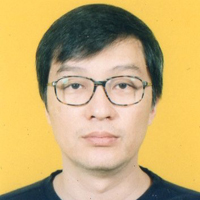
Department of Architecture, Tamkang University, New Taipei, Taiwan
Algorithms toward Architectural Design
We have seen different algorithms applied to different architectural designs in the latest ALGODeQ competition, including generation, evaluation, realization, fabrication, simulation, optimization, etc. There was a wide range of architectural design problems trying to be solved, including site analysis, circulation design, structural design, layout design, fluid dynamics and more. Overall these programs present the comprehensive possibilities of architectural design algorithms.
The design algorithms selected by group QP were generally attempts at academic research. Project my185, which was one of the top three, used the historical architectural structure “Vault.” Through computer program calculation, animation of new form possibilities and actual construction, it is an in-depth exploration into the feasibility of structures. Project vk222 allows us to see the combination of Shape Grammars, Case-Based Reasoning and Genetic Algorithm in design in order to provide many more layout possibilities. Project tu142 is a design through the thoughtful program Physics Engine, which provided the designer with immediate simulation, optimization and form-finding tools. RhinoVAULT, used in project vk222, and Kangaroo, used in project tu142, are both well known throughout the Internet. Many users download them and they are free, so they are well worth encouraging. Although this time group QA did not have an top award-winning project, two second prize projects analyzed the surroundings, calculated appropriate configurations, inserted the structure into the site and actually built it in a real space with computer simulations. This is a well-done reference that similar actual architectural design projects can consider in the future.
In the ALGODeQ competition, most of the projects are presented in the open source environments of Processing and Grasshopper as a platform for the development of algorithms and programs, and the results are ready to be shared on the Internet. Here we see the appearance of the spirit of “open source,” and at the same time, a response to the purpose of the ALGODeQ competition, which is “to create better works of architecture that contribute to humanity, society and culture.” The techniques, algorithms and design results that we see today are really something we could not have predicted 30 years ago. If we could have, we probably would have devoted ourselves more bravely to it. I have known the organizer of ALGODeQ, professor Makoto Sei Watanabe, because of my personal interest in Design Computation. Professor Watanabe is a pioneer in this field and has constructed a few significant digital architectural works throughout the time of his long-term concern with the development of “Induction Design”. This time, he gave a painstaking effort to hold this very meaningful competition, exploring emerging technologies and unearthing new architects. This has allowed us to see the gradual maturation of digital design development had grown strong, and I believe that we will happily see refined architectural design algorithms in future ALGODeQ competitions.
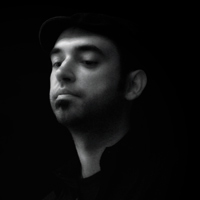
Design Research Lab, Architectural Association (AA) School of Architecture,
London, UK
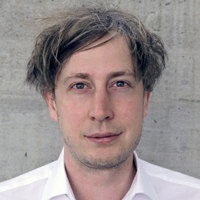
John H. Daniels Faculty of Architecture, Landscape, and Design, University of Toronto, Canada
The ALGODeQ competition called for innovative computational approaches in architecture, which transcend the conventional use of computer. In this regard, the competition was very successful.
Every architect uses algorithms for modeling. In commercial CAD-Software, those algorithms are hidden behind icons, mimicking traditional, physical drawing instruments. But the participants revealed that to regard the computer only as an efficient modeling tool means ignoring its real potential. The entries demonstrated in high quality how fast the field of computational architecture is evolving and what a broad range of opportunities this opens.
Among the submissions, a clear distinction appears between formal approaches of form finding, with a strong motivation in design-exploration, and problem-solver or simulation-software as a more imperative use of the computer. While the former are successful if new, unexpected architectural designs emerge (result-oriented), the latter enable architects to control and constrain design solutions in sophisticated ways (tool-oriented).
Many of the concepts can be traced back to earlier research in Computer Aided Architectural Design. Yet the high quality of implementation, the good applicability and the user-friendliness of those works are striking. It seems that performance and compatibility are no longer limiting factors, and differences between individual platforms are disappearing.
But more important, some entries present entirely new approaches. It became clear that one key driver for innovation is the Internet, which opens up new dimensions for digital design. For the first time, architectural knowledge can be shared in form of open-source code, and online platforms allow the realization of large-scale, multi-user and participatory design methods.
Last not least, some entries demonstrate how the combination of computational design strategies and digital fabrication can lead to a fantastic new architecture, which would be hard to imagine without information technology.
The results of the ALGODeQ competition indicate that, after the first pioneering experiments we are now entering a new phase of algorithmic design. Digital tools became ubiquitous, and the technical challenges concerning implementation and digital fabrication are vanishing.
Therefore, it is an exciting time for architecture. Architects now have the freedom to explore radical new digital design concepts and materialize those in unseen precision. Against this background, the task for the future will be to redefine our architectural values and to rethink the way we build our future houses.
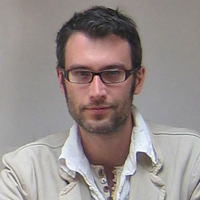
Space and Adaptive Architectures, Space Group, Director of MSc / MRes Adaptive Architecture and Computation, Academic director of EngD Virtual Environments, Imaging and Visualization, Bartlett School of Graduate Studies, University College London, UK
Since the turn of the 21st century, the use of the algorithm in design has changed from a fringe practice by specialist groups to something that is nearly ubiquitous across all levels of practice. Often, the algorithm is the design. Yet our sharing of design ideas is still typically done by looking at the products of design through traditional media—images of completed or proposed buildings in print or online—which often cannot convey the clarity of thought, process or underlying intent of the computational processes at the core of many projects. ALGODeQ has functioned like any other open competition in that a range of projects have been compared across a spectrum of criteria, but for each it has been the algorithm itself that has been the focus, rather than the products it produces.
The real benefit of this initiative is as a means for facilitating discussion. By entering the algorithms themselves, comparing these and judging them on their own merits, ALGODeQ has provided a forum for sharing of ideas at a different level. There are still few venues for doing so. Several notable conferences exist in the field, as do blogs and other discussions online, but even in these the discussion can often tend toward the products. Even here it is easy to show images, but more difficult to share code. The discussion we need on computation in design is more difficult to have, but very important.
One of the highlights of this quest has been the diversity of entries, which was by no means guaranteed from the start. The global distribution of entrants alone indicates the spread of computation as a core design practice worldwide. Several of the entries have been excellent on every level, presenting functioning applications that are clearly useful in design practice today. For other contributions the distinguishing factor has been their creativity, proposing clearly novel concepts that may not produce a result with an obvious impact now but are so unusual as computational processes that they may serve as models for alternate ways of working in years to come. A half century after the birth of CAD itself, we are only just starting to understand automated manufacturing, ‘big data’ and other methods still unnamed, and still other entries appear to be in the initial stages of technologies that may come to dominate practice in the future. The range of prizes and honorable mentions awarded in ALGODeQ has reflected this diversity to some extent. A number of entries should serve as inspiration, but as a whole, the set of contributions should also allow a common basis for exchange criticism in our field, and serve to move technology forward. In this sense, the quest will, and should, continue.

Proxy Design Studio
adjunct assistant professor
Graduate School of Architecture, Planning and Preservation (GSAPP), Columbia University, NY, USA
Our relationship to software in the field of architecture has mainly been as a user of software not as a designer of software. In recent years it has become more accepted in our field to incorporate the design of a custom software tool as a part of the design process. The establishment of ALGODeQ captures a necessary foundation for further development of this area and beyond in our discourse.
In an era in which we can almost make anything we conceive of through technology, we are faced with our limits of our imaginations of what that dream is. Conditions where intentions are limited and computational resources are becoming increasingly more abundant via Moore’s Law. ALGODeQ takes a position to overcome this condition through a collaborative framework of human and machine, each understanding each others pros and cons.
Curiously, ALGODeQ attracts individuals that can think like an artist and implement like an engineer - perhaps a more rare breed of individual. This form of skill set illustrates and holds the key to innovation and creativity. The process of developing software by nature is a constant process of reflection and implementation of ones’ ideas. This embodies a process of testing the idea, but also learning something new in the process through a formal language that requires extreme clarity in order for it to even function.
Typical competitions are judged through the medium of images, models and natural language. ALGODeQ evaluation process of the project differs in the sense that the medium being evaluated is the raw computational logic of formal languages. This brings a distinction to the competition in that it evaluates the validity of the original inquiry or objective, as well as how successful the solution and the method was in order to achieve the objective.
It is encouraging to say the least the array of entries challenging a plethora of problems in the domain of architecture and urban design. The mission of ALGODeQ in that sense is already accomplished. The more we acknowledge the problems we face as designers as a discipline, our field will mature in its thinking and evolution. Creativity can be understood, made into a science. Creativity is perhaps one of the fundamental making of humans; therefore, ALGODeQ endeavor not only brings understanding to design but understanding to humans as well.
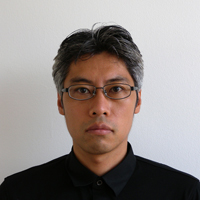
Digital Design, College of Architecture and Design, New Jersey Institute of Technology, Newark, USA
This competition ALGODeQ reminds me of a course called “Making something that can make almost anything” that was offered by a physics professor that I had in school days. The course was an intensive overview of self-reproducing machines. It introduced us, for example, to the idea of a 3-D printer that could print its own components, and the class eventually conducted semester-long robotics projects inspired by the idea. The meta-level idea, “a designer simultaneously being a tool-maker,” has become an almost imperative concept for architects today, and I find the same innovative aspiration in this competition led by Professor Watanabe. Among engineers and computer scientists, those who make tools have obtained the same level of recognition as those who create using the tools. In recent years, this has gradually become true in architecture. Most architectural computing projects, until around the late 1990s, silently revealed their co-authors in addition to the names of their designers through their strong visual biases caused by representational tendencies from commercial software applications. However, we never give credit to, for example, Maya or Softimage 3D. Now, a formerly limited range of representational tendencies had been superseded by more sophisticated versions of software. Recent refinements in 3-D modeling and visualization software have increased the varieties of expression available for architects and allowed them to conceive a higher level of creative ambitions beyond what general purpose commercial software can provide. For example, some architects have the ambition to deliver their aesthetic characteristics and design styles through the form of an algorithm – which can be downloaded and used by anyone – instead of solely providing instances of design.
What is fascinating about this recent tool-maker’s paradigm in architecture is that the capabilities of tools have gone beyond mere providing pragmatic engineering solutions, and this fact has imposed an unprecedented challenge for not only contestants but also jurors of this competition. Architects are seeking to capture something beyond pragmatism and efficiency when they make tools. But we are yet to define exactly what that is and how these characteristics can be expressed through a sequence of logical steps. Commonly used solutions among designers are algorithms such as interactive genetic algorithms that utilize qualitative and subjective judgments by users in addition to quantitative systematic evaluations based on objective functions during searches. Until we see design outcomes, it is normally difficult to identify their values. Moreover, formulating processes that can directly induce these values is an even harder problem. With regard to the above issues, unlike any other software design competition normally based on more trivial criteria such as usability and efficiency, this is an unprecedented competition with no known established evaluation standard for those emerging characteristics. Today, jurors are facing the challenge of dealing with ingenious efforts by designers to capture these elusive, undefined, and unknown qualities.
The two primary criteria from the competition guidelines were “originality” and “versatility.” It is extremely difficult to satisfy both simultaneously. Submissions with exceptional creativity occasionally lack comprehensive user-interfaces. “tu142 Kangaroo” and “my185 Rhino-Vault” demonstrated outstanding balances by satisfying the highest standards across different criteria: originality, usability, and versatility. “tu142 Kangaroo” probably has the highest versatility and is the most widely used application among all this year. “my185 Rhino-Vault” was targeted at more specific users and purposes. It was released later than kangaroo, and the versatility of the software remains to be determined by future users. However, it was based on an original structural engineering idea developed by the contestant, and the degree of the perfection as software was equally high. Additionally, choosing platforms well accepted among architects, Rhinoceros and Grasshopper, was a good strategy for software development found in these two tools.
Due to unprecedented originality and potential as software, “gp028 spring dome” and “di047 imitation” were also among those selected. These two entries incorporated self-organizational characteristics into design induction processes very well. di047 was one of the few examples in architecture that apply Kohonen’s Self-Organizing Map (SOM). The contestant made a revision to the original algorithm to preserve continuity from an original graphical input. While the inquiry into the true originality of this algorithm rests with computer scientists, the contestant found a meaningful application in architecture using a technique from computer science. A technique using SOM is already common in computer graphics, but this approach is somewhat overlooked among architectural designers. The interface of the software still has many opportunities for enhancement, such as adding an adjustable scaling parameter that can control the number of replications used for a target image or 3-D object from an original source. The same argument about interfaces can be made for gp028, and please see my comments on a later page about this entry.
There are extraordinary entries that possess almost equal or even superior technical merits in certain aspects of design compared to the abovementioned entries. For example, I would have voted for “jl244 Public Mall” as one of the winners for the QA category, if it had had actual built architectural results. It introduced a remarkable architectural construction method using recycled RC modules. “Vk222 Imn architecture” was the only scheme that utilized a crowd-based platform and demonstrated impressive web-based programming skills. The guidelines asked for software with an active algorithmic process that could generate designs from user-defined objectives, and my votes went to those that better fit these criteria this time. Finally, “In258 iGeo” definitely demonstrated a skill level in computing just as impressive as that shown by “tu142 Kangaroo.” Please see my comments on a later page about this entry.
In summary, the overall quality of applications submitted by entrants was astonishingly high, and I am honored to be a part of this process. After seeing prominent names in the list of committee members, I realized that I was the least-known person in the group, and it was at first a bit disconcerting. However, I managed to convince myself that I am one of the most ideologically and politically unbiased members, and with my technical background in math from twenty-some years ago, I thought I could contribute fair and unique decisions by being so anonymous and generic. I would like to thank all applicants for making my summer exciting. Finally, I am also grateful to the competition chair, Professor Makoto Sei Watanabe, for giving me the opportunity to serve as a juror.

SHOHEI MATSUKAWA / 000studio
assistant professor
Faculty of Environment and Information Studies, Keio University SFC, Fujisawa, Japan
The total number of subscription was not numerous, but it included famous projects such as Rhinoceros Grasshopper plugin “Kangaroo” or the library IGeo of Processing, which made the entire level very high. Furthermore the morphogenesis did not remain sculptural, and what made this ALGODeQ successful is the fact that we could see various interpretations of Algorithmic Design. Personally, I have highly evaluated algorithm resolving particular problems, than tools giving designing infrastructure like Kangaroo. The “lmn architecture.com” of “vk222” especially left an impression on my mind, because it equipped 3 well balanced algorithms, (1)generating of forms, (2)evaluating of forms, (3)searching of forms. I think this proposal has a potential of creating various and complex moreover functional and rational architectures, if the (1)genesis of form gets polished furthermore.
I feel honored of being involved to the first international competition of Algorithmic Design(ALGODeQ). I desire this will be held continuously hereafter.
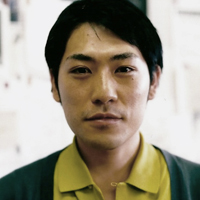
Department of Architecture, Faculty of Engineering, the University of Tokyo, Japan
I am very surprised that there are a bunch of works that are widely known as completed software or plug-ins. I really appreciate such outstanding works and feel honored to have a chance to examine them.
However, putting the outline of this competition in mind, it is obvious that this competition does not aim to the programs merely with "hi-performance, hi-usability". Rethinking a new aesthetic discipline and imagery into the "Computation in design". The significant point in ALGODeQ is it.
Nowadays, computation have been modeling a new social discipline. Computation doesn’t mean merely calculation, but more like rhetoric to the concept of our way of viewing, thinking and producing. Because our daily life is much closer to the devices connected to the internet, and also IT is expanding not only among the internet but also in our real life. SNSs are gathering and calculating our daily activities as well as we are calculating information to search website in need or to find the optimal lines in public transport.
As history tell us, the design philosophy has been affected by the technical paradigm in each era. Design in the Neolithic Revolution was defined by the complex interaction between biogeography, geomorphology and human systems. And the one in Industrial Age has the strong relation with the rationality and productivity. However, design is not defined only by such technological or scientific application, but also by social / cultural background in each era. The true sophistication in design is not located only in the technical point of view - efficiency, performance and usability. Also something that can’t be measured numerically - authentic, poetics, and philosophy - can be the main issue in design on the other hand.
Now, our society is called “Information Age”. And now the “Information” is being highly organized - some say it is highly disorganized from another point of view - and calculated dynamically, our society is also being organized and calculated as well. In the way, our society is a kind of gigantic “Architecture” designed in computational way. As previously described, our daily life is a part of computation anymore.
As the competition statement says, “Algorithmic design” is not simply equal to the design with computers. Regarding information as the new classical element for future, the computational way of thinking and the algorithmic way of design could be high-powered microscopes that enable us to look into the world from the new aspect of view. Algorithm can be a tool to reveal some hidden aspect of information. We really appreciate some software / plug-ins that show us the power of algorithm to explore new perspectives.
